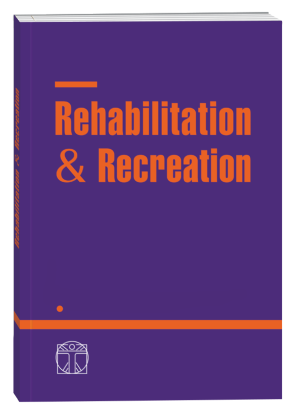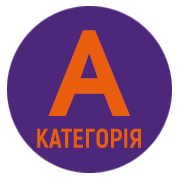PECULIARITIES OF PHYSICAL DEVELOPMENT OF 36–40-YEAR-OLD WOMEN WITH DIFFERENT POSTURE TYPES
DOI:
https://doi.org/10.32782/2522-1795.2023.17.21Keywords:
health, women, musculoskeletal system, disorders, physical development, posture, biogeometric profile, mature age.Abstract
The aim of the article presupposes the study of physical development of 36–40-year-old women with different posture types. Research methods include theoretical analysis of special literature sources, method of copying information from medical records, pedagogical observation, photography and posture analysis, pedagogical experiment, methods of mathematical statistics. The results. Data from medical records of 36–40-year-old women have showed that in the younger sample (36–38-year-old) almost a third of the subjects (28.6%) had a normal posture. In the group of women aged 39–40, the share of people with normal posture is somewhat smaller (14.2%), and therefore, there are more people who are distinguished by a certain type of disturbed posture. It was established that most often in the age period of 36–40 years the type of posture with a round back (32.1%) or scoliotic posture (28.6%) is recorded, while a flat back is determined less often among common disorders. Studying separate age samples selected within the analyzed period, it can be seen that in the group of women aged 39–40 years, compared to those of younger group, there were more women diagnosed with a round (35.8%) or flat back (21.4%). Moreover, it is obvious that there are no significant differences among women with different types of posture within the analyzed age groups. However, if all eight groups are compared, regardless of the age limit, it can be observed that the groups differ significantly in terms of body weight, waist circumference, and hip circumference. The remaining parameters of physical development have less significant intergroup variation. This applies to indicators of body mass index, hip girth and shin, where intergroup differences have not been statistically confirmed, but differences have been found only among some groups at level of trends (p < 0.1). It is worth noting that the lowest indicators of body weight have been found in 36–38-year-old women with scoliotic and normal postures. They are slightly higher than those of the same aged women with a round and flat back. As for women aged 39–40, we have noticed a different nature of differences. The highest body weight values have been recorded in women with a flat back and scoliotic posture, while women with a normal posture have shown to maintain the lowest body weight. Conclusions. Since the only indicator of physical development, according to which the differences were insignificant, was the indicator of body length, the statement that all the characteristics of female physical development tend to increase with age is true. Confirmation of this conclusion can be found if we refer to the body mass index indicator, since all subjects aged 36–38 years had a body mass index within the normal range, while 35.7% of people aged 39–40 years showed a body mass index in the stage of pre-obesity (U = 24; n36–38 + n39–40 = 28; р < 0,001). In general, these data fully confirm the previously discovered patterns of female body development, according to which fat deposits gradually accumulate with age.
References
Бібік Р. Корекція порушень постави жінок першого періоду зрілого віку засобами оздоровчого фітнесу : дис. … канд. наук з фіз. вих.: 24.00.02. Київ, 2013. 213 с.
Ватаманюк С. Підвищення рівня стану біогеометричного профілю постави чоловіків зрілого віку засобами оздоровчого фітнесу: дис. … докт. філ. наук: спец. 017. Київ, 2023. 224 с.
Кашуба В., Попадюха Ю. Біомеханіка просторової організації тіла людини: сучасні методи та засоби діагностики і відновлення порушень: монографія. Київ: Центр учбової літератури, 2018. 768 с.
Кашуба В., Гончарова Н., Носова Н. Біомеханіка просторової організації тіла людини: теоретичні та практичні аспекти. Теорія і методика фізичного виховання і спорту. 2020. № 2. С. 67–85.
Кашуба В., Григус І., Руденко Ю. Стан просторової організації тіла осіб зрілого віку: виклик сьогодення. Influence of physical culture and sports on the formation of an individual healthy lifestyle: scientific monograph. Riga, Latvia: Baltija Publishing. 2023. Р. 56–68. DOI https://doi.org/10.30525/978-9934-26-280-7-3.
Корекція тілобудови людини в процесі занять фізичними вправами: теоретичні та практичні аспекти: колективна монографія / за наук. ред. А. Альошиної, І. Випасняка, В. Кашуби. Луцьк: Вежа-Друк, 2022. 536 с.
Лазько О. Фактори ризику виникнення порушень кістково-м’язової системи у жінок працездатного віку під впливом негативних
чинників трудового середовища. Спортивний вісник Придніпров’я. 2021. № 2. С. 75–84.
Прилуцька Т., Альошина А., Сологуб О., Лазько О. Характеристика фізичного розвитку жінок 36–44 років, які займаються слайд-аеробікою. Молодіжний науковий вісник Східноєвропейського національного університету імені Лесі Українки. Фізичне виховання і спорт. 2018. № 3. С. 38–43.
Руденко Ю. Корекція порушень стану біогеометричного профілю постави чоловіків зрілого віку в процесі занять оздоровчим фіт-
несом: дис. … докт. філ. наук: спец. 017. Київ, 2021. 254 с.
Ткачова А. Диференційований підхід у заняттях оздоровчим фітнесом жінок першого періоду зрілого віку з урахуванням просторової організації тіла: дис … докт. філ. наук: спец. 017. Київ, 2020. 262 с.
Byshevets N., Kashuba V., Levandovska L., Grygus I., Bychuk I., Berezhanskyi O., Savliuk S. Risk Factors for Posture Disorders of Esportsmen and Master Degree Students of Physical Education and Sports in the Specialty “Esports” Sport i Turystyka. Środkowoeuropejskie Czasopismo Naukowe. 2022. № 5. С. 97–118. DOI: http://dx.doi.org/10.16926/sit.2022.04.06.
Goncharova N., Kashuba V., Tkachova A., Khabinets T., Kostiuchenko O., Pymonenko M. Correction of postural disorders of mature age women in the process of aqua fitness taking into account the body type. Теорія та методика фізичного виховання. 2020. № 20 (3). Р. 127–136. DOI: https://doi.org/10.17309/tmfv.2020.3.01.
Hakman A., Andrieieva O., Kashuba V., Nakonechnyi I., Cherednichenko S., Khrypko I., Tomilina Yu., Filak, F. Characteristics of Biogeometric
Profile of Posture and Quality of Life of Students During the Process of Physical Education. Journal of Physical Education and Sport. 2020. № 20 (1). Р. 79–85. DOI: https://doi.org/10.7752/jpes.2020.01010.
Kashuba V., Rudenko Y., Khabynets T., Nosova N. Use of correctional technologies in the process of health-recreational fitness training by men with impaired biogeometric profile of posture. Pedagogy and Psychology of Sport. 2020. 6. (4). 45-55. http://dx.doi.org/10.12775/PPS.2020.06.04.005.
Kashuba V., Tomilina Y., Byshevets N., Khrypko I., Stepanenko O., Grygus I., Smoleńska O., Savliuk S. Impact of Pilates on the Intensity of Pain in the Spine of Women of the First Mature age. Teorìâ Ta Metodika Fìzičnogo Vihovannâ. 2020. № 20 (1). Р. 12–17. DOI: https://doi.org/10.17309/tmfv.2020.1.02.
Kashuba V., Khmelnitska I., Andrieieva O. et al. Biogeometric Profile of the Posture as a Factor of Men’s Functional Assessment of Movements in the Early Middle Age. Sport Mont. 2021. № 19 (2). Р. 35–39. DOI: 10.26773/smj.210907.
Lazko O., Byshevets N., Kashuba V., Lazakovych Yu., Grygus I., Andreieva N., Skalski D. Prerequisites for the Development of Preventive Measures Against Office Syndrome Among Women of Working Age. Teorìâ ta Metodika Fìzičnogo Vihovannâ. 2021. № 21 (3). Р. 227–234. DOI: https://doi.org/10.17309/tmfv.2021.3.06.
Lazko O., Byshevets N., Plyeshakova O., Lazakovych Yu., Kashuba V., Grygus I., Volchinskiy A., Smal J., Yarmolinsky L. Determinants of office syndrome among women of working age. Journal of Physical Education and Sport. Vol. 21 (Suppl. issue 5). P. 2827–2834. DOI: 10.7752/ jpes.2021.s5376.
Tkachova A., Dutchak M., Kashuba V., Goncharova N., Lytvynenko Y., Vako I., Kolos S., Lopatskyi S. Practical implementation of differentiated approach to developing water aerobics classes for early adulthood women with different types of body build. Journal of Physical Education and Sport. 2020. № 20 (S. 1). Р. 456–460. DOI: 10.7752/jpes.2020.s1067
Downloads
Published
How to Cite
Issue
Section
License

This work is licensed under a Creative Commons Attribution-NonCommercial-NoDerivatives 4.0 International License.












